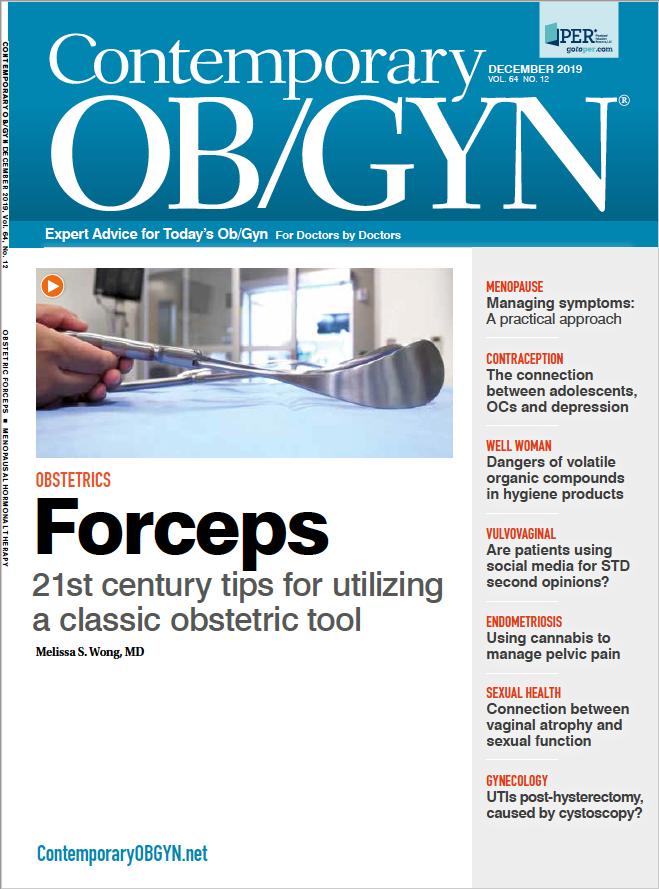Forceps delivery technique
Dr. Melissa S. Wong demonstrates a forceps delivery from beginning to end and provides step-by-step instructions.
The most frequent struggles are usually encountered in initial placement – particularly of the second blade – and less commonly during traction. It is important that the cephalic curve (or “palm side” of the blade) is as closely apposed to the fetal scalp as possible, or if the fetal scalp is not visible, then to the maternal introitus. Importantly, as the forceps begins its motion, there can be no movement forward or backward of the handle until the maternal thigh is reached. Doing so starts the blade of the forceps down the sacrum/face (in an OA fetus) rather than along the more hollow space between parietal bone and vagina. A forceps blade on the correct trajectory should require almost no force, and I remind learners of this by encouraging them to hold the handle with only their fingertips.
As the forceps lock, if the left blade was placed first, this allows the English lock to come together easily. If, however, the right blade was placed first (as would be the case in a ROA or LOP presentation placing the posterior blade first), then they will appear to come together and be unable to lock. This is easily resolved by moving the left handle so that it falls under the right and the English lock will come together correctly. Last, the correct direction of traction is best achieved by visualizing the presenting part and cardinal movements necessary for delivery. For an OA presentation, this requires direct downward (axis) traction. Only after the occiput clears the symphysis is this then transitioned to outward then upward to minimize perineal injury. For OP presentations, the biparietal diameter is typically much higher than anticipated and Dennen recommends depressing the shanks against the perineum before locking (effectively inching them higher and more anterior on the parietal bone). We have found also that there is typically a much greater need for downward traction initially before then turning outward and upward to take the fetus into flexion for delivery.
Read more - Forceps delivery: Contemporary tips for a classic obstetric tool

S4E1: New RNA platform can predict pregnancy complications
February 11th 2022In this episode of Pap Talk, Contemporary OB/GYN® sat down with Maneesh Jain, CEO of Mirvie, and Michal Elovitz, MD, chief medical advisor at Mirvie, a new RNA platform that is able to predict pregnancy complications by revealing the biology of each pregnancy. They discussed recently published data regarding the platform's ability to predict preeclampsia and preterm birth.
Listen
